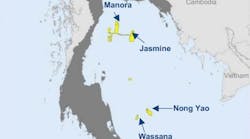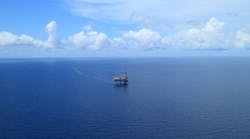Offshore staff
HOUSTON – At the Offshore Technology Conference in Houston, researchers and scientists from the US Department of Energy's National Energy Technology Laboratory (NETL) were on-hand to discuss the Blowout and Spill Occurrence Model (BLOSOM).
Part of NETL's offshore energy resources research portfolio, BLOSOM is an integrated data and modeling system designed to simulate offshore oil spills resulting in well blowouts in water depths of 500 to 5,000 ft (152 to 1,524 m). NETL said the system can help with risk assessment; aids in the prevention of future spills; and also serves as a tool for response planning.
BLOSOM comprises a suite of 3D modeling tools designed to function as a single system. NETL says that the tools considers environmental uncertainties associated with deepwater and ultra-deepwater environments and blowouts. It includes a jet/plume model; a transport model, which simulates long-term effects and transport of the spill; a conversion model that allows for the transfer of elements from the first two models; a weather model; a crude oil model that simulates changes to the oil's physical and chemical properties in high-pressure environments; a gas/hydrates model; and a hydrodynamic handler, which handles ocean data for use in the other models.
Hosted by the American Petroleum Institute in 2014, BLOSOM participated in a model comparison study on plume dynamics and droplet sizes. It is also being integrates in the Geocube, part of NETL's Energy Data eXchange, a subsurface mapping application.
5/7/15




